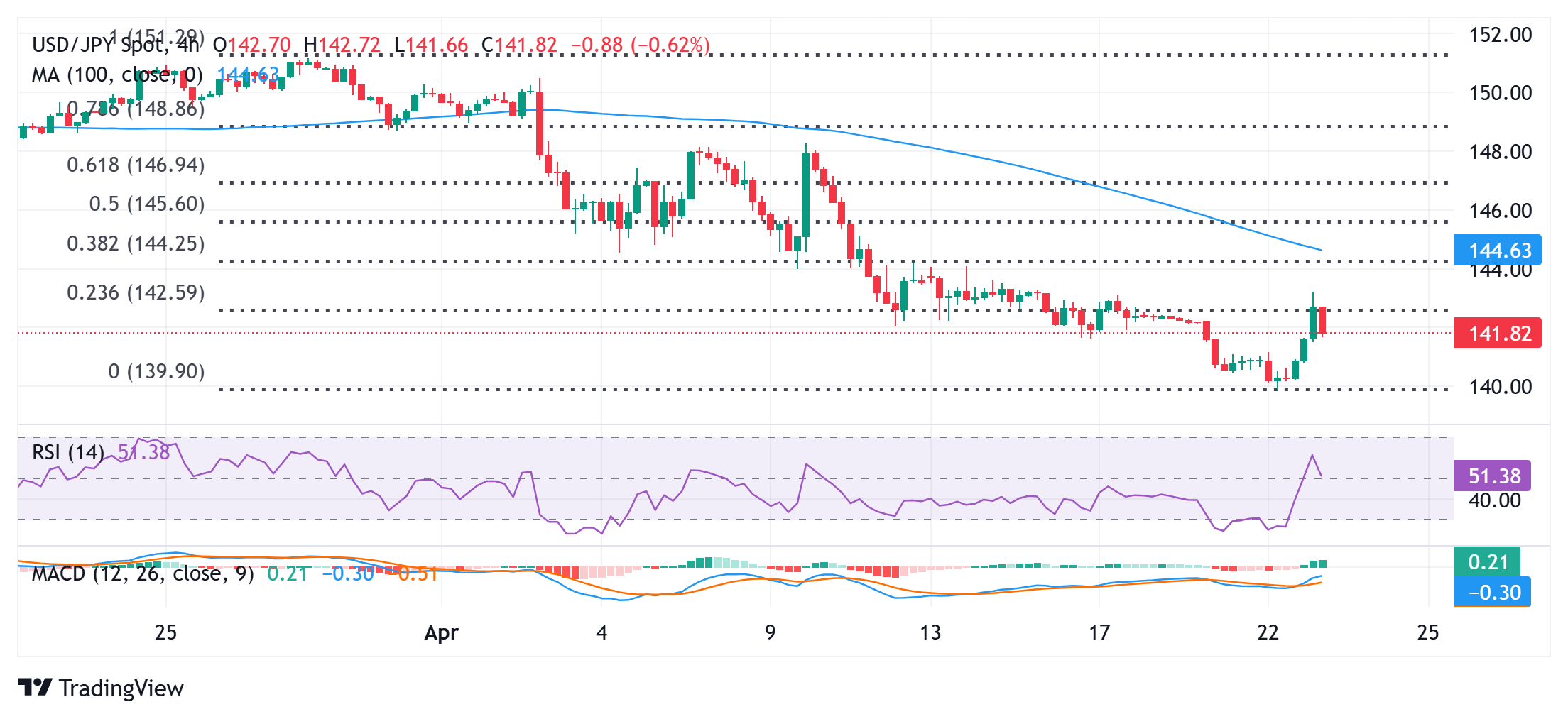Japanese Yen climbs to the top end of its daily range against USD; bullion potential seems intact

- The Japanese Yen attracts some dip-buyers and stalls its pullback from a multi-month low against the USD.
- Hopes for a US-Japan trade deal and rising bets for more BoJ rate hikes in 2025 continue to underpin the JPY.
- A positive turnaround in the global risk sentiment keeps a lid on any meaningful gains for the safe-haven JPY.
The Japanese Yen (JPY) recovers early lost ground to a one-week trough touched against its American counterpart earlier this Wednesday and climbs to the top end of the daily range heading into the European session. The initial market reaction to mixed PMIs from Japan turns out to be short-lived amid reports that the US and Japan are moving closer to an interim arrangement on trade. Adding to this, the growing acceptance that the Bank of Japan (BoJ) will continue raising interest showed some resilience below the 140.00 psychological mark on Tuesday and the subsequent short-covering rally warrants some caution for bearish traders. The recovery momentum, however, struggles to find acceptance above the 143.00 mark or the 23.6% Fibonacci retracement level of the March-April downfall. This, in turn, should now act as a key pivotal point, above which spot prices might aim to surpass the Asian session peak, around the 143.20 area, and climb further towards reclaiming the 144.00 mark. The momentum could extend further towards the 144.25-144.30 region or the 38.2% Fibo. level.
On the flip side, weakness below the 141.45 zone, or the Asian session low, now seems to find decent support near the 141.00 mark. A convincing break below the latter, however, will suggest that the recent downtrend is still far from being over and make the USD/JPY pair vulnerable to retesting sub-140.00 levels, with some intermediate support near the 140.45 region. The subsequent downfall would expose the 2024 swing low, around the 139.60-139.55 area.
US Dollar PRICE Today
The table below shows the percentage change of US Dollar (USD) against listed major currencies today. US Dollar was the strongest against the Swiss Franc.
| USD | EUR | GBP | JPY | CAD | AUD | NZD | CHF | |
|---|---|---|---|---|---|---|---|---|
| USD | 0.32% | 0.17% | 0.17% | 0.04% | -0.83% | -0.46% | 0.42% | |
| EUR | -0.32% | -0.16% | -0.15% | -0.29% | -1.08% | -0.79% | 0.09% | |
| GBP | -0.17% | 0.16% | 0.02% | -0.13% | -0.94% | -0.63% | 0.28% | |
| JPY | -0.17% | 0.15% | -0.02% | -0.15% | -0.90% | -0.67% | 0.26% | |
| CAD | -0.04% | 0.29% | 0.13% | 0.15% | -0.76% | -0.48% | 0.41% | |
| AUD | 0.83% | 1.08% | 0.94% | 0.90% | 0.76% | 0.32% | 1.20% | |
| NZD | 0.46% | 0.79% | 0.63% | 0.67% | 0.48% | -0.32% | 0.92% | |
| CHF | -0.42% | -0.09% | -0.28% | -0.26% | -0.41% | -1.20% | -0.92% |
The heat map shows percentage changes of major currencies against each other. The base currency is picked from the left column, while the quote currency is picked from the top row. For example, if you pick the US Dollar from the left column and move along the horizontal line to the Japanese Yen, the percentage change displayed in the box will represent USD (base)/JPY (quote).
